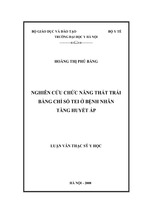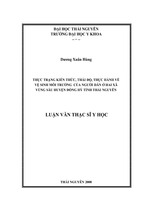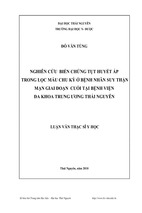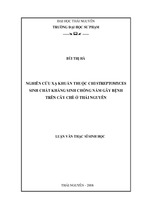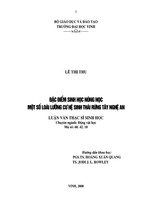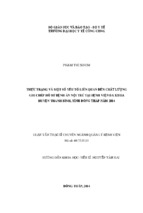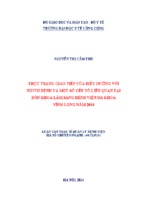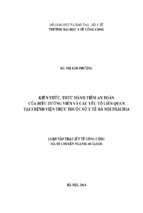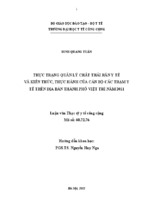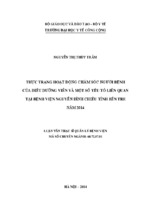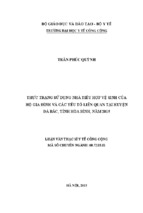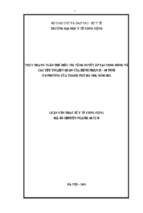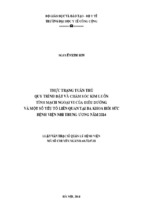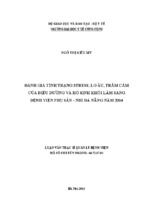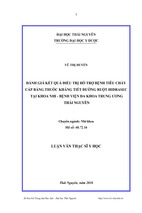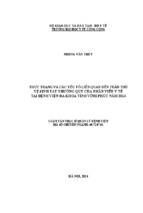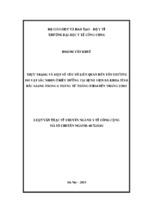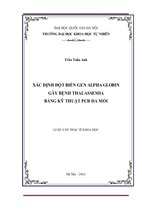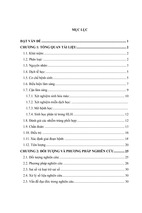Investor Protection and Agency Problems in Family Firms:
Evidence from China
A thesis submitted in fulfilment of the requirements for the degree of
Doctor of Philosophy
Jing Zhou
Bachelor of Management
Master of Management
School of Economics, Finance and Marketing
College of Business
RMIT University
October 2011
DECLARATION
I certify that except where due acknowledgement has been made, this thesis is the original
work of the author alone; the thesis has not been submitted previously, in whole or in part,
to qualify for any other academic award; the content of thesis is the result of work which
has been carried out since the official commencement date of approved research program;
any editorial work, paid or unpaid, carried out by a third party is acknowledged; and ethics
procedures and guidelines have been followed.
Signed:
Jing Zhou
October 2011
ACKNOWLEDGEMENTS
The completion of the Ph.D thesis is not an ending, but signifying a new start for the next
stage of my life and research. Achieving this life long goal of mine could not have been
possible without many people. It is a pleasure to thank all of them, while the number is too
large to mention each respectively.
I would like to start by showing my gratitude to my sponsors, the China
Scholarship Council (CSC) and the School of Economics, Finance, and Marketing of
RMIT University, for awarding me a life-changing opportunity to pursuit the doctoral
degree in Melbourne. Without their sponsorship, I would not be here.
I owe my deepest gratitude and respect to my principal supervisor, Professor On
Kit Tam who was abundantly helpful and always offered unending patience, invaluable
guidance and support throughout my Ph.D study and research. I thank him not only for
teaching me the value of research, but also for passing on me the precious wisdom to get
along with people. “The real long term benefit lies in getting the wisdom and right attitude
to life, in the end that will definitely better prepare you to grow into a great scholar and
teacher!” This word he has written for me will be always kept in my mind and guide me
through all my life time. With his continuous inspiration and encouragement, I am so
confident to achieve success in my life and research in the near future. I could not have
imagined having a supervisor for my Ph.D study even better than him. I am grateful to my
second supervisor, Professor Tony Naughton, for his constructive advice and comments on
my thesis. My sincere thanks also goes to Professor Heather Mitchell for allowing me to
attend her econometric classes and provide me with insightful opinions on the empirical
analysis of my thesis.
The friendly help of Ms Prue Lamont and Ms Kalpana Lalji from the Business
Research Office, the assistance of the staff of the school of Economics, Finance, and
Marketing at RMIT University, the encouragement of Professor Changwen Zhao, and the
procedural advice of Associate Professor Yingkai Tang at Sichuan University of China are
most appreciated in many ways.
I am indebted to my many friends. I will not be able to name them all here though I
would like to give my heartfelt gratitude to my dear Ph.D friends, Paweena Khongchan,
Chin Moi Loh, Ploy Sud-on, Kunlagan Boonyauva, Ping Yu, Ling Qi, Kornkanok
Duangpracha, Rui Bi, Mingjuan Ding, and Xiaoshuang Shi for helping me get through the
ii
difficult times in Melbourne, and for all the emotional support, caring, entertainment and
company they have provided. They make my Ph.D life in Melbourne so meaningful and
memorable. I am also grateful to my best friends in China, Xiangyu Shang, Jie Liu, Ye
Wang, Na Xu, and Xiaojiao Cai. They have offered the warmest camaraderie to share with
me through happiness and sorrow even thousands of miles away. A special and sincere
thank goes to Tingting Ye and Jiujiu Zhao who have provided me the homelike
accommodation and helped me know about Australia at the beginning of my Melbourne
life. I cherish the friendship and will keep it in a dear place of my heart no matter how far
we are physically from each other.
Lastly, and most importantly, I would like to thank my beloved father, Shungui
Zhou, and mother, Yunfang Wang, for giving birth to me at the first place and raising me
with all they have. They have passed on me the most precious wealth – patience and
courage – which inspire me being generous to others despite everything and continuously
keeping self-improvement throughout my life.
iii
TABLE OF CONTENTS
CHAPTER 1......................................................................................................................... 1
INTRODUCTION ............................................................................................................... 3
1.1 BACKGROUND ............................................................................................................... 4
1.1.1 Studies on family-controlled firms ........................................................................ 4
1.1.2 Development on the law and finance literature .................................................... 5
1.2 MOTIVATION ................................................................................................................. 7
1.3 OBJECTIVES OF THE THESIS ........................................................................................... 9
1.4 STRUCTURE OF THE THESIS ......................................................................................... 11
CHAPTER 2....................................................................................................................... 13
LITERATURE REVIEW ................................................................................................. 13
2.1 INTRODUCTION ........................................................................................................... 14
2.2 AGENCY THEORY ........................................................................................................ 14
2.2.1 Agency problem between owners and managers ................................................ 14
2.2.2 Agency problem between controlling and minority shareholders ...................... 17
2.3 DEFINITIONS OF A FAMILY FIRM .................................................................................. 19
2.4 FAMILY GOVERNANCE AND FIRM PERFORMANCE ........................................................ 24
2.4.1 Family ownership and firm performance............................................................ 26
2.4.2 Family control and firm performance................................................................. 29
2.4.3 Family management and firm performance ........................................................ 30
2.5 LITERATURE ON LAW AND FINANCE ............................................................................ 36
2.5.1 Law and finance .................................................................................................. 36
2.5.2 The role of investor protection ............................................................................ 37
2.5.3 The role of alternative mechanisms .................................................................... 40
2.5.4 Investor protection and corporate governance................................................... 42
2.6 CHAPTER SUMMARY.................................................................................................... 44
CHAPTER 3....................................................................................................................... 47
THEORETICAL ANALYSIS AND HYPOTHESES DEVELOPMENT .................... 47
3.1 INTRODUCTION ........................................................................................................... 48
iv
3.2 DUAL-TRIPLE AGENCY PROBLEMS ............................................................................... 48
3.3 INVESTOR PROTECTION ............................................................................................... 51
3.4 HYPOTHESES DEVELOPMENT ....................................................................................... 52
3.4.1 The firm fully owned by the family ...................................................................... 54
3.4.2 The firm not fully owned but controlled by the family ........................................ 56
3.5 CONCLUSION ............................................................................................................... 61
CHAPTER 4....................................................................................................................... 62
METHODOLOGY ............................................................................................................ 62
4.1 INTRODUCTION ........................................................................................................ 63
4.2 PANEL DATA ANALYSIS ............................................................................................... 63
4.2.1 Two-stage least squares estimation of the fixed effects panel data models ........ 63
4.2.2 Random effects estimation with panel data......................................................... 65
4.3 REGRESSION MODELS .................................................................................................. 65
4.3.1 Models of investor protection and agency costs in family firms ......................... 66
4.3.2 Models of investor protection and family governance mechanisms ................... 68
4.3.3 Models of family governance and agency costs in family firms.......................... 70
4.4 CHAPTER SUMMARY.................................................................................................... 72
CHAPTER 5....................................................................................................................... 73
DATA.................................................................................................................................. 73
5.1 INTRODUCTION ........................................................................................................... 74
5.2 SAMPLE ....................................................................................................................... 74
5.3 DEFINING A FAMILY FIRM: A NEW APPROACH ............................................................. 75
5.4 DATA SOURCES ........................................................................................................... 77
5.5 DESCRIPTIVE STATISTICS OF FAMILY FIRMS ................................................................ 77
5.6 CHAPTER SUMMARY.................................................................................................... 81
CHAPTER 6....................................................................................................................... 83
MEASUREMENT OF INVESTOR PROTECTION IN CHINA ................................. 83
6.1 INTRODUCTION ........................................................................................................... 84
6.2 INVESTOR PROTECTION ON PAPER: LEGAL INVESTOR PROTECTION INDEX ................... 85
6.2.1 Investor protection indices-a review ................................................................... 85
6.2.2 Development of investor protection in China ..................................................... 88
v
6.2.3 Measurement of legal investor protection index ................................................. 90
6.2.4 Main results......................................................................................................... 96
6.3 INVESTOR PROTECTION IN PRACTICE: GOVERNANCE ENVIRONMENT INDEX .............. 102
6.3.1 Measurement of the enforcement of investor protection-a review .................... 103
6.3.2 Measurement of public governance environment index.................................... 104
6.3.3 Main results....................................................................................................... 105
6.4 CONCLUSION ............................................................................................................. 110
CHAPTER 7..................................................................................................................... 112
IMPACT OF INVESTOR PROTECTION ON AGENCY COSTS IN FAMILY
FIRMS .............................................................................................................................. 112
7.1 INTRODUCTION ......................................................................................................... 113
7.2 STATISTICS SUMMARY .............................................................................................. 115
7.3 RESULTS AND DISCUSSION ........................................................................................ 116
7.3.1 Correlation analysis.......................................................................................... 116
7.3.2 Diagnostic test................................................................................................... 117
7.3.3 FE2SLS estimation of panel-data models ......................................................... 119
7.4 ROBUSTNESS CHECK ................................................................................................. 123
7.5 CONCLUSION ............................................................................................................. 125
CHAPTER 8..................................................................................................................... 127
IMPACT OF INVESTOR PROTECTION ON FAMILY GOVERNANCE
MACHANISMS ............................................................................................................... 127
8.1 INTRODUCTION ......................................................................................................... 128
8.2 STATISTICS SUMMARY .............................................................................................. 130
8.3 RESULTS AND DISCUSSION ........................................................................................ 132
8.3.1 Categorical analysis.......................................................................................... 132
8.3.2 Correlation analysis.......................................................................................... 135
8.3.3 Random effects estimation................................................................................. 140
8.4 ROBUSTNESS TEST..................................................................................................... 143
8.5 CONCLUSION ............................................................................................................. 145
CHAPTER 9..................................................................................................................... 148
IMPACT OF FAMILY GOVERNANCE ON AGENCY COSTS IN FAMILY FIRMS
........................................................................................................................................... 148
vi
9.1 INTRODUCTION ......................................................................................................... 149
9.2 IMPACT OF FAMILY OWNERSHIP, CONTROL, AND MANAGEMENT ............................... 151
9.2.1 Main impact of family ownership, control, and management on performance 151
9.2.2 Interaction impact of family ownership, control, and management on
performance ............................................................................................................... 155
9.2.3 Founder effects on performance ....................................................................... 159
9.2.4 Robustness test .................................................................................................. 162
9.3 INTERACTION IMPACT OF FAMILY GOVERNANCE AND INVESTOR PROTECTION ON
PERFORMANCE ................................................................................................................ 164
9.3.1 Main results....................................................................................................... 164
9.3.2 Robustness test .................................................................................................. 167
9.4 CONCLUSION ............................................................................................................. 170
CHAPTER 10................................................................................................................... 173
CONCLUSION ................................................................................................................ 173
10.1 INTRODUCTION ....................................................................................................... 174
10.2 SUMMARY OF THIS THESIS ....................................................................................... 174
10.3 KEY CONTRIBUTIONS .............................................................................................. 179
10.4 LIMITATIONS AND DIRECTIONS FOR FUTURE RESEARCH .......................................... 182
REFERENCE .................................................................................................................. 184
APPENDICES.................................................................................................................. 197
vii
LIST OF TABLES
TABLE 2.1 SUMMARY OF DEFINITIONS OF FAMILY FIRMS IN THE LITERATURE ...................... 20
TABLE 5.1 NUMBER AND PERCENTAGE OF FAMILY FIRMS IN 2000-2009 A ........................... 78
TABLE 5.2 INDUSTRY DISTRIBUTION OF FIRMS BY CSRC STANDARD INDUSTRY
CLASSIFICATION CODE (2001)A ..................................................................................... 80
TABLE 6.1 DEFINITIONS OF INDICATORS OF LLSVSH ........................................................... 86
TABLE 6.2 DEFINITIONS OF LEGAL INVESTOR PROTECTION INDICES ..................................... 92
TABLE 6.3 CRITERIA FOR ADDING OR SUBTRACTING SCORES................................................ 95
TABLE 6.4 INDICES OF LEGAL INVESTOR PROTECTION FROM 1991-2009 .............................. 98
TABLE 6.5 VARIABLES AND DESCRIPTION OF THE ENFORCEMENT OF INVESTOR PROTECTION
IN THE LITERATURE ..................................................................................................... 103
TABLE 6.6 VARIABLES AND DESCRIPTION OF GOVERNANCE ENVIRONMENT INDEX ............ 105
TABLE 6.7 DESCRIPTIVE STATISTICS OF GOVERNANCE ENVIRONMENT INDEX AND THE
CONSTITUENTS ............................................................................................................ 106
TABLE 6.8 THE GOVERNANCE ENVIRONMENT INDEX OF INDIVIDUAL PROVINCES IN CHINA 107
TABLE 6.9 REGIONAL DISTRIBUTION OF THE GOVERNANCE ENVIRONMENT INDEX AND THE
CONSTITUENTS ............................................................................................................ 110
TABLE 7.1 DESCRIPTIVE STATISTICS OF MAIN VARIABLES .................................................. 116
TABLE 7.2 CORRELATIONS OF MAIN VARIABLES................................................................. 117
TABLE 7.3 DIAGNOSTIC TEST.............................................................................................. 118
TABLE 7.4 FE2SLS ESTIMATION OF THE EFFECTS OF INVESTOR PROTECTION ON FAMILY
FIRMS .......................................................................................................................... 121
TABLE 7.5 FE2SLS ESTIMATION OF THE EFFECTS OF FORMAL INVESTOR PROTECTION ON
FAMILY FIRMS ............................................................................................................. 121
TABLE 7.6 FE2SLS ESTIMATION OF THE EFFECTS OF INVESTOR PROTECTION IN PRACTICE ON
FAMILY FIRMS ............................................................................................................. 122
TABLE 7.7 ROBUSTNESS TEST OF THE EFFECTS OF INVESTOR PROTECTION ON FAMILY FIRMS
.................................................................................................................................... 123
TABLE 7.8 ROBUSTNESS TEST OF THE INDIVIDUAL EFFECTS OF INVESTOR PROTECTION ON
FAMILY FIRMS ............................................................................................................. 125
TABLE 8.1 DESCRIPTIVE STATISTICS OF MAIN VARIABLES .................................................. 131
viii
TABLE 8.2 IMPACT OF INVESTOR PROTECTION ON FAMILY OWNERSHIP, CONTROL, AND
MANAGEMENT ............................................................................................................. 135
TABLE 8.3 CORRELATIONS OF MAIN VARIABLES FOR FULL SAMPLE.................................... 136
TABLE 8.4 CORRELATIONS OF MAIN VARIABLES FOR FAMILY/OUTSIDER CEO SUBSAMPLE 138
TABLE 8.5 RE ESTIMATION OF IMPACT OF INVESTOR PROTECTION ON FAMILY GOVERNANCE
MECHANISMS ............................................................................................................... 142
TABLE 8.6 ROBUSTNESS OF THE IMPACT OF INVESTOR PROTECTION ON FAMILY GOVERNANCE
MECHANISMS ............................................................................................................... 143
TABLE 8.7 ROBUSTNESS OF RE ESTIMATION OF THE IMPACT OF INVESTOR PROTECTION ON
FAMILY GOVERNANCE ................................................................................................. 144
TABLE 9.1 DIAGNOSTIC TEST.............................................................................................. 152
TABLE 9.2 FE2SLS ESTIMATION OF ROA ON FAMILY OWNERSHIP, CONTROL, AND
MANAGEMENT ............................................................................................................. 155
TABLE 9.3 INTERACTION IMPACT OF FAMILY OWNERSHIP, CONTROL, AND MANAGEMENT ON
PERFORMANCE
............................................................................................................ 157
TABLE 9.4 MEAN PERFORMANCE IN FOUNDER- AND RELATIVE-LED FAMILY FIRMS ............ 158
TABLE 9.5 GROUPS OF FAMILY FIRMS LED BY FOUNDERS, RELATIVES OR OUTSIDERS ......... 161
TABLE 9.6 MEAN PERFORMANCE WITH FOUNDERS, RELATIVES, OR OUTSIDERS AS CHAIRMAN
OR CEO....................................................................................................................... 161
TABLE 9.7 ROBUSTNESS TESTS OF EFFECTS OF FAMILY OWNERSHIP, CONTROL, AND
MANAGEMENT ON PERFORMANCE ............................................................................... 163
TABLE 9.8 ROBUSTNESS TESTS OF EFFECTS OF FAMILY GOVERNANCE IN DIFFERENT TYPES OF
FAMILY FIRMS ............................................................................................................. 164
TABLE 9.9 FE2SLS ESTIMATION OF INTERACTION EFFECTS OF FAMILY GOVERNANCE AND
INVESTOR PROTECTION ................................................................................................ 166
TABLE 9.10 ROBUSTNESS TESTS OF INTERACTION EFFECTS OF FAMILY GOVERNANCE AND
INVESTOR PROTECTION ................................................................................................ 168
TABLE 9.11 ROBUSTNESS TEST OF INTERACTION EFFECTS OF FAMILY GOVERNANCE AND
INVESTOR PROTECTION ................................................................................................ 170
ix
LIST OF FIGURES
FIGURE 1.1 THE MAIN STRUCTURE OF THE THESIS ................................................................ 12
FIGURE 3.1 DUAL-TRIPLE AGENCY PROBLEMS IN FAMILY FIRMS .......................................... 50
FIGURE 3.2 INVESTOR PROTECTION AND DUAL-TRIPLE AGENCY PROBLEMS ......................... 52
FIGURE 5.1 PROCESS OF SORTING FAMILY FIRMS .................................................................. 75
FIGURE 5.2 DISTRIBUTION OF FAMILY FIRMS (NUMBER OF OBSERVATIONS) ........................ 79
FIGURE 6.1 CONSTRUCTING PROCESS OF LEGAL INVESTOR PROTECTION INDEX.................... 96
FIGURE 6.2 THE EVOLUTION OF ILAW AND CLAW FROM 1991 TO 2009 ............................ 99
FIGURE 6.3 THE EVOLUTION OF SEVEN INCREMENTAL INDICES FROM 1991 TO 2009 .......... 100
FIGURE 6.4 THE EVOLUTION OF SEVEN CUMULATIVE INDICES FROM 1991 TO 2009............ 100
FIGURE 6.5 PROVINCIAL DISTRIBUTION OF THE GOVERNANCE ENVIRONMENT INDICES IN
CHINA ......................................................................................................................... 108
FIGURE 6.6 REGIONAL DISTRIBUTION OF THE LEVEL OF GOVERNANCE ENVIRONMENT IN
CHINA ......................................................................................................................... 110
FIGURE 9.1 PRESENCE OR ABSENCE OF THE DUAL-TRIPLE AGENCY PROBLEMS IN FAMILY
FIRMS .......................................................................................................................... 156
x
ABSTRACT
The increasingly important role played by family firms in China’s fledging capital market
calls for a better understanding of how it works and is governed. This study aims to
explore how corporate governance issues in family firms are tackled from the perspective
of investor protection. The thesis addresses the question by first presenting theoretical
models showing the relations among investor protection, family governance, and agency
costs in family firms. It then formulates empirical models to test the predictions of the
theoretical models by using a unique and detailed family-firm data set in China’s stock
markets, one of the largest and fastest growing economies in the world.
In the analysis of the impact of investor protection on agency costs in family firms,
the findings show that the dynamic improvement of written legal rules pertaining to
investor protection is potentially beneficial to Chinese family firms by mitigating agency
problems and thus enhancing firm performance. However, the enforcement of investor
protection, despite provincial discrepancies in China, is found to have no influence over
agency costs in family firms.
The thesis also examines whether family governance arrangements are shaped by
the legal protection of shareholders in local regimes in China. The findings reveal that an
increase in the effectiveness of the provincial enforcement of investor protection goes hand
in hand with an increase in ownership concentration and the involvement of family
managers in management, but a reduction in the use of control-enhancing mechanisms in
Chinese family firms.
The thesis further addresses the question of how agency conflicts in family firms
are tackled by the choice of family governance mechanisms which are to some extent
shaped by provincial enforcement of investor protection in China. The findings show that
concentrated ownership rights with active family management generates performance
benefits of family firms operating under strong investor protection. However, family
control in excess of ownership rights leads to performance losses that are proportional to
the difference of control over cash-flow rights, when legal protection for shareholders is
inferior. The two effects are found to be more pronounced in founder-led family firms, as
opposed to those in which a relative serves as CEO.
The thesis makes several methodological innovations to the growing literature:
1
(1) The thesis develops theoretical models for the first time in studies of this kind,
illustrating how the twin agency problems in family firms are shaped and tackled by legal
protection of shareholders.
(2) The thesis pioneers a synthesis of more systematic and comprehensive analysis
of characteristics of family ownership, control, and management to more accurately
distinguish different types of Chinese family firms in terms of the governance structure and
impacts.
(3) The thesis remedies a gap in the literature by incorporating the analysis the
often neglected issue of the owner-manager conflict among studies of family firms. The
dual-triple agency framework the thesis develops also represents a more comprehensive
and coherent analysis in studies of this kind.
(4) Given the complexity of agency conflicts in family firms, the thesis extends the
notion of investor protection often used in the literature, to cover legal protection of small
shareholders against large shareholders, but also of all shareholders against managers.
(5) The impact of family governance mechanisms on firm performance in the
literature is often explained by the distinct institutional and regulation development in
individual markets. The thesis reinforces this interpretation by incorporating an empirical
analysis within one country that is characterised by significant provincial variations in
legal and governance settings.
Based on its methodological innovations, the dissertation’s empirical evidence
contributes to the existing literature in the following ways:
(1) The thesis suggests that the formal legal rules do to some extent contribute to
the growth of family firms in the economy, while the enforcement of investor protection is
relatively weak. More polices to enhance legal enforcement are therefore much desirable in
China.
(2) Concentrated ownership rights and the preservation of family management are
found to serve as complements rather than substitutes for weak investor protection in
China’s context.
(3) The thesis suggests that a descendant CEO does not necessarily have no benefit
or inevitably hurt firm performance provided the founder occupies the position of
Chairman. This evidence extends the analysis of Villalonga and Amit (2006) by
demonstrating that, in Chinese family firms, founders not only need to be inspiring leaders
through the position of Chairman of the Board, but in addition they or their relatives are
and need to be good managers as well.
2
Chapter 1
INTRODUCTION
3
1.1 Background
The increasing research interest in governance issues in family firms prevalent in emerging
economies, and the growing law and finance literature on the subject provide the major
research background of the thesis. The former helps set the research scope and significance
of the study, while the latter offers the research perspective and framework for analysing
governance issues for the thesis.
1.1.1 Studies on family-controlled firms
Family ownership is almost universal among privately held firms, and is also dominant
among publicly traded firms in the world. In Western Europe, South and East Asia, the
Middle East, Latin America, and Africa, family firms are at least as common in public
firms as widely held and other nonfamily firms (Claessens et al., 2000; Faccio & Lang,
2002; La Porta et al., 1999). Even in the United States and United Kingdom, some of the
largest listed firms, such as Wal-Mart Stores and Ford Motor, are family controlled
(Burkart et al., 2003).
This prevalence of family ownership has stimulated research interest in the
relationship between corporate governance and firm performance in family firms, but the
results are mixed. Some scholars produce evidence that family firms outperform nonfamily
firms due to the family’s diligent monitoring on managers or its active involvement in
management (Anderson & Reeb, 2003; Maury, 2006; McConaughy et al., 1998; Sraer &
Thesmar, 2007; Villalonga & Amit, 2006). Others find the opposite results, suggesting that
the exacerbated conflict between controlling and minority shareholders facilitates the
expropriation of private benefits of control and thus impairs firm performance (Claessens
et al., 2002; Faccio et al., 2001; Lins, 2003; Miller et al., 2007; Morck et al., 2000).
It is suggested that institutional and governance regimes could shape the
differences in ownership structure and governance mechanisms (Dharwadkar et al., 2000;
Morck & Yeung, 2004; Peng & Jiang, 2010; Wright et al., 2005). However, previous
studies have mainly focused on the developed markets in the West, such as U.S. and
Continental Europe, while few have paid enough attention on family firms in emerging
economies. Further, the significant extent of family ownership, coupled with the absence
of effective external governance mechanisms prevailing in emerging economies, makes
agency problems in family firms more costly and problematic (Morck & Yeung, 2004;
Wright et al., 2005). Thus, whether family firms are more or less valuable than nonfamily
4
firms, especially in emerging countries, still remains an open question and deserves better
understanding.
Theoretically, family firms are considered to face a twin-governance problem: the
classic owner-manager conflict, and the conflict between large (family) and small
(nonfamily) shareholders (Burkart et al., 2003; Villalonga & Amit, 2006). Recent studies
on this subject have however concentrated on the divergence of interest between different
shareholder groups, but often overlook the first agency conflict. The latter conflict thus
tends to form the central agency issue of modern corporations in most countries (Johnson
et al., 2000b; La Porta et al., 1999, 2002; Shleifer & Vishny, 1997), leading to a new
perspective on corporate governance (Young et al., 2008). The problems between owners
and managers are expected to be reduced and even eliminated, because of the large
shareholders’ close monitoring and active management of family members, (Villalonga &
Amit, 2006).
Is it the case? In reality, many family firms in emerging economies are
experiencing a transition from family management to professional management (Clifford,
1973; Daily & Dalton, 1992), but few of these firms have successfully managed this
transition (Young et al., 2008). The fact that family firms may have wanted to transfer firm
management to professional managers for various reasons signals the existence of agency
costs arising from family management, as suggested by Anderson and Reeb (2003). The
widespread failure in such a transition to professional management however may support
the superiority of family managers in family firms. Therefore, this phenomenon suggests
that the owner-manager conflict is far from being a resolved issue, and the nature of
agency problems in family firms is expected to be more complicated than it has been
considered in the literature, at least in the emerging markets. Greater attention and more indepth academic research are thus warranted in this field.
1.1.2 Development on the law and finance literature
In traditional finance, securities are characterized by their cash flows (Modigliani & Miller,
1958), whereas recent financial research has shown that the defining feature of various
securities is in fact the rights endowed to their owners (Hart, 1995), which are critical to
outside investors, especially when insiders (i.e. managers and controlling shareholders) act
in their own interests.
La Porta, Lopez-de-Silanes, Shleifer and Vishny (1998) first highlight that the
rights attached to securities and how well these rights are protected depend on the law and
5
the quality of its enforcement. The protection investors receive, in turn, determines their
willingness to finance firms. Thereafter, a substantial body of empirical evidence on a
strong law-finance-growth nexus has been developed in the literature. One of the central
results is that legal protection varies sharply across countries, and this variation predicts the
differences in financial development and ownership structures (La Porta et al., 2006; La
Porta et al., 1997, 1998, 1999, 2000a, b, 2002).
Many studies have extended this line of research, noting that strong investor
protection is empirically associated with better financial outcomes both at the firm and
aggregate levels, as reflected in dispersed shareholder ownership (Allen et al., 2005;
Djankov et al., 2008; La Porta et al., 1998, 1999, 2000b), better corporate governance
mechanisms (Allen et al., 2005; Klapper & Love, 2004; La Porta et al., 2000b), higher
dividend payouts (La Porta et al., 2000a), lower control premium (Djankov et al., 2008;
Dyck & Zingales, 2004; La Porta et al., 2006; Nenova, 2003), less earnings manipulation
(Leuz et al., 2003), easier for firms accessing to a new market or industry (Djankov et al.,
2002), higher corporate valuation (Giannetti & Koskinen, 2010; La Porta et al., 2002),
efficient allocation of capital across firms (Claessens & Laeven, 2003; La Porta et al.,
2000b; Wurgler, 2000), valuable and broad financial markets (Demirguc-Kunt &
Maksimovic, 1998; La Porta et al., 1997; Pistor et al., 2000), less likelihood of currency
crisis (Johnson et al., 2000a), and greater economic growth (Carlin & Mayer, 2003;
Demirguc-Kunt & Maksimovic, 1998; Rajan & Zingales, 1998), etc. This strand of
literature has been developed into “law and finance”.
The law and finance literature poses new insights to explore agency problems in
family firms by highlighting the role of legal protection of minority shareholders in the
financial markets. As suggested by La Porta et al. (2000b), with respect to the conventional
theoretical framework based on bank-centred and market centred financial systems, the
legal analytical approach is a more meaningful way to understand the nature of corporate
governance. Yet, in respect of the governance issues in family firms, Burkart et al.(2003)
state that the controlling shareholder, even with significant ownership, is still exposed to
the risk of being expropriated by the manager who runs the company in practice. This
gives credence to the existence of owner-manager conflict in large corporations. They also
propose that such managerial expropriation is likely to be mitigated by the law and its
enforcement. As such, while the law and finance literature provides a new perspective to
explore the agency conflict between controlling and minority shareholders, it is
nonetheless necessary and fruitful to call for a broader concept of investor protection that
6
covers the twin agency issues in family firms in respect of the application of the lawfinance-growth nexus in relevant research.
1.2 Motivation
The main motivation of this research rises from addressing key issues from two strands of
the existing literature including agency issues in family firms, and literature on law and
finance. On one hand, the agency literature theoretically states that the conflict of interest
between family and nonfamily shareholders (which is referred to as Agency Problem II) is
in general presumed to overshadow the conflict between owners and managers (Agency
Problem I), leading to an overwhelming concentration of research on Agency Problem II in
the existing studies (Dharwadkar et al., 2000; Faccio et al., 2001; Johnson et al., 2000b; La
Porta et al., 1999, 2002; Shleifer & Vishny, 1997; Young et al., 2008). However, some
studies still argue Agency Problem I is far from being a resolved issue in family firms, and
deserves at least as much attention as devoted to Agency Problem II (Barth et al., 2005;
Barton & Waymire, 2004; Buchanan, 1975; Castillo & Skaperdas, 2005; Chami, 2001;
Miller et al., 2007; Schulze et al., 2001; Zhou et al., 2010). It is thus important to firstly
uncover the presence and nature of all key agency problems in family firms at the
conceptual level.
On the empirical side, the evidence of the effects of family-controlled governance
on family firms is mixed in the previous research. It is partly because different samples and
time periods are applied in different capital markets in individual studies. As most studies
have concentrated on the developed markets, investigations of family firms in emerging
economies are clearly worthwhile. Additionally, none of the previous studies so far has
investigated family-firm issues in China, one of the largest and fastest emerging economies
in the world. In effect, China provides an excellent setting for the analysis of family-firm
issues for the following reasons.
First, family firms are estimated to represent 80~90% of the private economy
which has contributed substantially to the rapid growth in China in recent decades (Zhang
et al., 2002). In 2008, private enterprises made 11.18 trillion RMB (US$1.7 trillion) fixed
capital investment in the economy, representing 64.9% of the aggregate investment by the
state-owned sector,1 foreign enterprises and private enterprises. Data from the sample in
the thesis show that publicly traded family firms accounted for 34% of China’s listed
1
The state-affiliated businesses and solely state-owned enterprises are not included in the estimation. Data
are sourced from National Bureau of Statistics of China (http://www.stats.gov.cn/).
7
companies, while the Small and Medium Enterprises board (SME) in the Shenzhen Stock
Exchange (SZSE) was almost entirely constituted by family firms at the end of 2009. Thus,
the increasingly important role played by family firms in China’s fledging capital market
needs to be accompanied by a better understanding of how it works and is governed. This
study aims to contribute to such an understanding.
Second, family management is prevalent among Chinese family firms. Data in this
research show that family firms in which family members serve as directors or managers
represent 78% of listed family firms, and 65% of listed family firms are managed by
family Chairman or CEO. Thus, the prevalence of family management allows for an indepth comparison of the role of family versus professional managers in family firms.
On the other hand, the growing law and finance literature has made significant
improvements to studies on the subject by the use of the legal analytical approach that
could provide a new perspective to undertand the nature of corporate governance (La Porta
et al., 2000b). However, many findings in this area are drawn from studies undertaken in
the context of developed markets. As emerging economies are typically characterised by
the absence of effective formal institutions for investor protection, resulting in weak
governance environment (Allen et al., 2005; Mitton, 2002), legal effects on organizational
activities, such as corporate governance arrangements, are expected to differ significantly
from those found in developed countries. This strand of literature therefore requires more
attention focusing on how agency problems in family firms are tackled by the effectiveness
of investor protection provided by the country’s legal and regulatory systems in emerging
economies.
Further, investor protection in the literature is generally considered to consist of the
changes of formal legal rules and the effectiveness of legal enforcement (Allen et al., 2005;
Anderson & Reeb, 2004; Djankov et al., 2003; La Porta et al., 1998; Pistor et al., 2000), as
the strong effectiveness of legal enforcement is assumed to substitute for weak rules (La
Porta et al., 1998). Conventional studies in this field usually adopt the comparative
approach by using cross-country samples, which tends to create estimate biases.
Investigating regional (provincial) variations in the quality of law enforcement within one
country is thus considered more fruitful (Wu et al., 2009). In this regard, China’s
significant legal reform, particularly in the area of corporate & securities law, and the
discrepancies in its provincial enforcement also offer a unique opportunity and data set for
the analysis of the within-country law-finance-growth nexus for three reasons.
8
First, formal legal rules pertaining to the rights of investors have seen substantive
improvements during the period 1991-2009 in China. By the end of 2009, China has
transplanted a series of legal and regulatory rules pertaining to investor protection from
developed countries.
Second, the enforcement of investor protection in China is to a large extent
captured by the interactions between local governments and national legal institutions (Jia
& Tomasic, 2010; Tomasic & Fu, 1999; Xia & Fang, 2005). Therefore, despite the unified
regulation of the written legal rules at the national level, family firms in individual
provinces and regions are exposed to different degrees in the effectiveness of legal
enforcement and informal alternative mechanisms in China (Allen et al., 2005; Chen et al.,
2005; Fan et al., 2007; Wong, 1985; Wu et al., 2009).
Third, since the 1990s, China and other emerging countries have gone through a
fundamental transition toward market-based economies from central planning systems.
China’s evolution of legal rules thus follows a broadly similar pattern to many emerging
countries (Peng & Heath, 1996). As the choice of governance mechanisms is to some
extent subject to institutional and governance regimes, China’s experience may therefore
provide valuable lessons and insights on the way family businesses develop in other
emerging economies.
To recapitulate, the general lack of research on fundamental corporate governance
issues in family firms prevailing in emerging countries, especially in Chinese context, and
the substantive development of the law and finance literature create the major motivation
of the thesis.
1.3 Objectives of the thesis
Based on the above research motivation, the central objective of this thesis can be
summarized as how corporate governance issues in family firms are tackled from the
perspective of investor protection in China’s context. This objective raises five subresearch objectives underlying this study across five chapters. The first research objective
is to define the presence and nature of main agency problems in family firms (Chapter 3).
In the thesis, agency problems in family firms are deemed to include the conflict of interest
between the controlling family and professional managers (Agency Problem IA) and the
conflict between the family and family managers (Agency Problem IB), as well as the
divergence of interest between family and nonfamily shareholders (Agency Problem II).
9
- Xem thêm -

